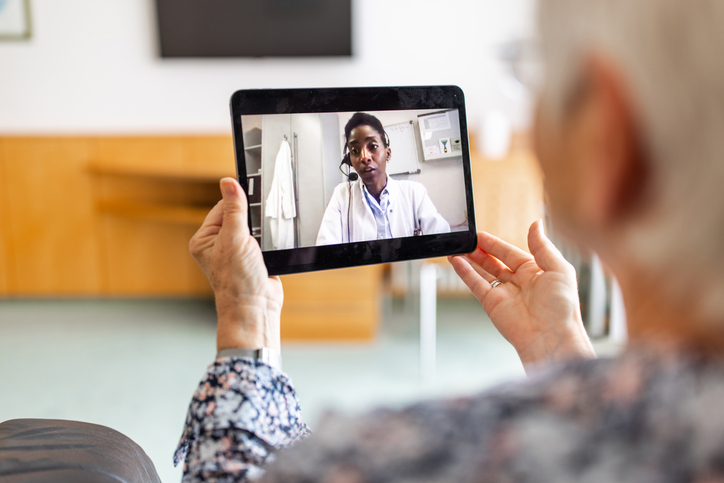In 2022, people will be able to consult their doctor remotely, just as they work remotely using Zoom or have a drink with their family on Skype. But is remote consultation really here to stay? A recently published Xerfi study takes stock of the changes in demand and the changes in the ecosystem.

Doing everything remotely challenged by the “back to the way things were” test.
In the last two years, the use of digital meeting and social spaces has spread rapidly as a result of successive lockdowns. Companies have entered the world of remote working – sometimes forcibly – and tools such as Zoom, Meet and Skype have become part of employees’ daily lives.
However, the trend towards working remotely is not a one-way street. At the end of 2021, the HouseParty application announced its closure after recording a record 50 million downloads per month at the beginning of the pandemic. A few months later, it was Google’s turn to take a step backwards on its remote working policy by asking its employees to return to the office gradually.
In the health sector too, the “bubble” effect around remote consultation has partially deflated after the initial craze. According to Xerfi, the number of remote consultations will fall from 18 million in 2020 to 13 million in 2021. For 2022, the projections are still downwards with 11 million consultations.
At Crédit Agricole Assurances, two phenomena can be observed. For working people covered by their company’s health policy, the number of remote consultations increased tenfold between 2019 and 2021. A segment of the population that may have started to develop habits as the trend remains high in 2022.
On the other hand, in the case of individuals who take out top-up health insurance policies, mainly senior citizens and people who are not in work, use has not yet become more widespread.
Nevertheless, innovations are continuing in the collective and individual sectors, with the introduction of written remote consultation in 2023. This is about being able to chat with a doctor. An easy-to-use, confidential and fast service.
Remote consultation: an already well-structured and efficient ecosystem
However, a return to pre-Covid standards is far from being envisaged! In 2019, barely 100,000 remote consultations were reimbursed in France: a total that is still 100 times lower than the current level.
The difference is that the ecosystem has structured itself at great speed in two years. At the same time, doctors have been trained and patients have developed new habits:
- 1 in 5 French people have already used remote medical services;
- 7 out of 10 doctors have already carried out a remote consultation;
- 500 million euros is the amount of remote consultation equipment that has been reimbursed to doctors by Assurance Maladie (French health insurance);
- 64 French startups are now specialised in remote consultation tools and solutions.
According to Xerfi, the demand is there and the market development potential is high by 2024 in all the segments identified:
- Virtual medical surgeries for health professionals;
- Mobile remote consultation equipment;
- On-demand remote consultation/remote medical advice services;
- Fixed remote consultation booths and terminals.
Doctolib, the European champion of remote medicine
In this new environment, one player stands out. Doctolib has established itself as the leader in appointment scheduling in Europe. A ‘steamroller’ that continues to widen the gap in terms of additional services and commercial power.
According to Xerfi, it is even the driving force behind the entire ecosystem: the platform has established digital appointment booking as a standard practice and acts as a catalyst for the dissemination of new services to patients and doctors. But will it last?
Despite a clear drop in the number of remote consultations over the last two years, the study highlights a significant potential for development. Several factors should fuel this trend: the rejuvenation of the profession, the efforts of the public authorities, and the increase in operators’ resources. Remote medicine seems to be marking time, but in reality it is preparing to take off.